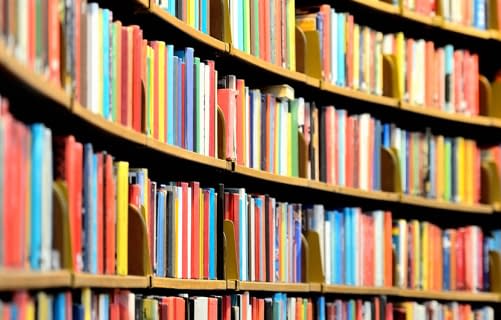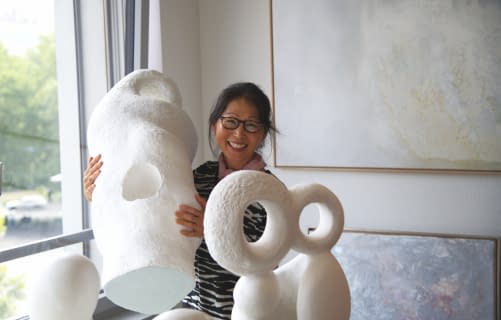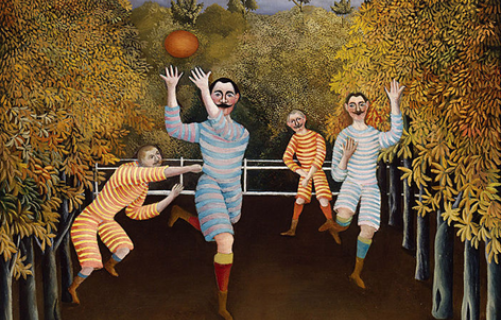Short Summary
The 2025 Women's European Football Championship, an encounter with an Olympic champion and artistic photographer, a professional ice hockey player who paints on art24: the blog on ‘Sport and Art’ was born!
Sport and Art – Opposites or Harmonious Team Players?
After all, it did roll for a few meters – Jean Tinguely's spectacular machine colossus Klamauk from 1979. As a cultural ambassador, Klamauk noisily and rattlingly accompanied hundreds of fans and football enthusiasts on its small path to the opening match of the Women's European Football Championship at the Basel stadium on July 2, 2025. This peaceful coexistence of art and sport, combined with a recent personal encounter with the artist Iouri Podladtchikov – who became Olympic snowboarding champion for Switzerland in Sochi in 2014 – and the fact that EVZ ice hockey player Dominik Schlumpf, also a highly intriguing visual artist, presents and sells his artworks on art24, sparked my curiosity as a "moderately sports-enthusiastic" art historian: Are these connections between sport and art mere coincidences? Or are there deeper connections, overlaps, and commonalities between the two disciplines? Do top athletes often create art professionally? And what can the two fields learn from each other? One thing is already clear: the path to answering my questions became an exciting discovery tour, which taught me that both areas are more interconnected than one might think.
Athletic Athletes of Antiquity – Immortalized in Artworks
Thanks to the ancient Olympic Games: through them, competitions and talented male athlete-heroes were immortalized in bronze sculptures, on amphorae or vases, which also served as trophies. Whether runners, pentathletes, wrestlers, or boxers – if they showed outstanding performances, renowned artists like the Athenian painter and later potter Euphronios immortalized these athletes in unique documents, some of which even included names. These works continue to show us the close connection between artistic creation and celebrated achievements in the then male-dominated world of sports, as documented on an Attic kylix crater depicting athletes preparing for a competition:
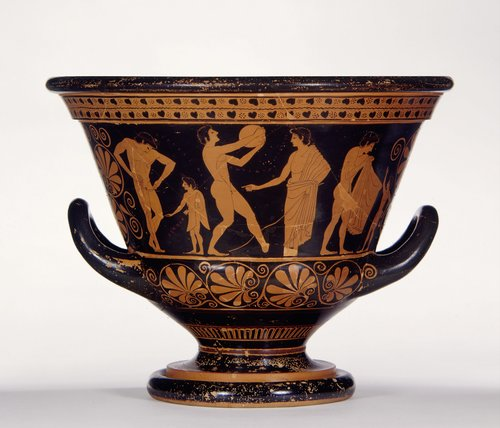
But it wasn’t just the competition that artists found worth depicting. The careful cleaning and grooming performed by athletes after physical exertion, shown on a wine jug at the Antikenmuseum Basel, reflects how sport, muscle development, and a well-toned body played a central role primarily in the lives of boys and men.
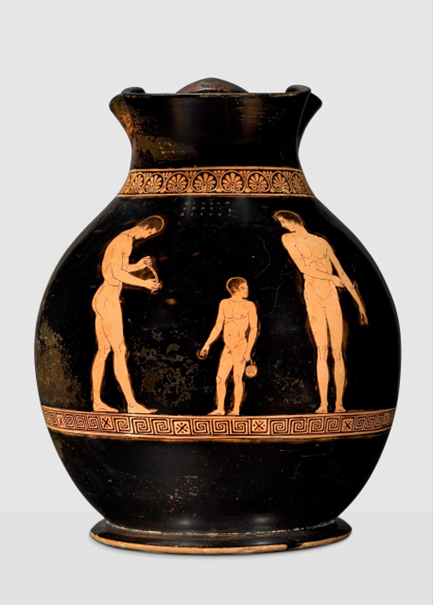
Sporting Themes and Motifs in Art History
This small insight into ancient representations of athletic activities makes one want to browse art history for more motifs and themes surrounding sport. From the surprisingly vast array of paintings, drawings, sculptures, and photographs, I randomly selected some works that present the subject in different artistic, societal, or cultural contexts. And it dawned on me: this is just the tip of a giant, ancient iceberg...
Who would have thought: today’s familiar game of tennis, for example, once had its origins behind monastery walls. Monks had been familiar with ball games since the 12th century. Later, students in Paris spread the new sport – considered especially health-benefiting for men up to 50 years old – among the nobility, where the hand directly executed the stroke. This even led to a new architectural form, as the following sheet shows: the ballhouse.
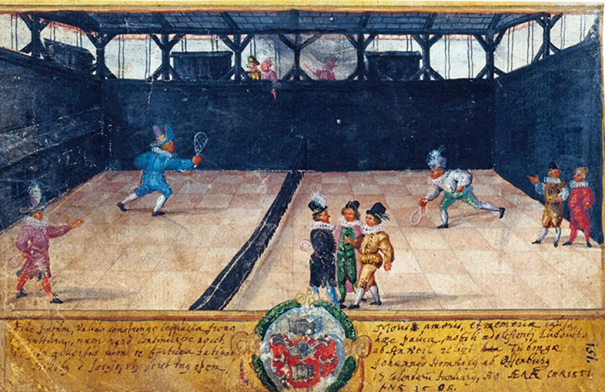
Sporting activities like fencing, horseback riding, hunting, or dancing were reserved for the nobility. The immense visual material available speaks volumes about this! Among the common people, however, wrestling, log tossing, running competitions, and later in the 18th and 19th centuries, rowing and canoeing, gained popularity. These sports became increasingly popular across Europe, especially from England. And not to forget: football. Though its roots can be traced back over three millennia to various countries, it was England that, in the first half of the 19th century, became the motherland of modern football for both men and women. The historic sketch of the first official women's football match, with Captain Miss Netty Honeyball in the front, published in The Daily Graphic in March 1895, captures the dynamic action of the women at the opposing goal impressively. Considering the clothing, we can be glad that, over time, the fashion evolved to be more game-friendly.
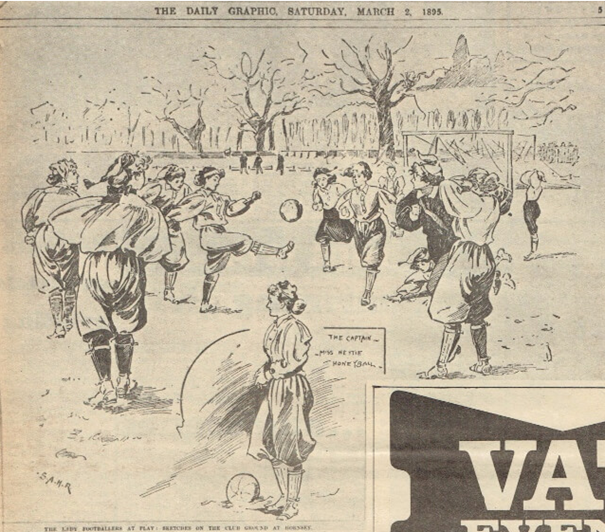
In his typically naïve painting style, which distances itself from correct proportions and perspectives, French painter Henri Rousseau (1844-1910) painted Les Joueurs de Football in 1908. Four men, dressed in brightly striped, short-sleeved sports outfits, are joyfully hopping on a field bordered by trees under mostly blue skies. The way the ball is held with raised arms suggests less a football game and more possibly a reference to the first international rugby match between France and England in Paris in 1908, which evidently inspired Rousseau.
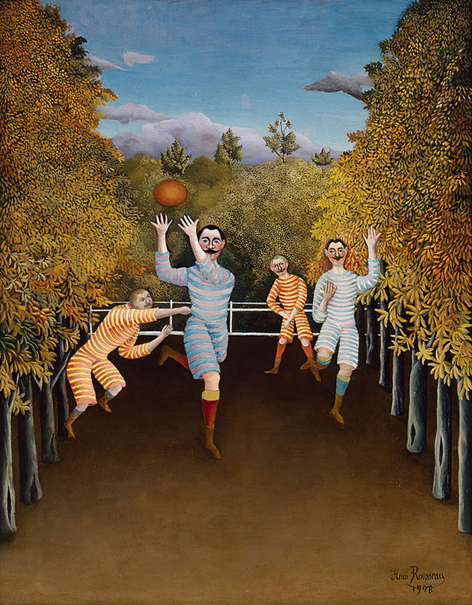
Rousseau wasn’t the only one fascinated by ball games. To name a few others: artists like Salvador Dalí (1904-1989) with his series of silver medals for the 1982 World Cup in Spain, Nicolas de Staël (1914-1955) and his series Les Footballeurs (Paris, 1952), or Austrian artist Maria Lassnig (1919-2014) with her so-called football paintings, making an ironic foray into a sporty "male domain", are unique documents reflecting their respective artistic perspectives and ideas.
This series of sporting motifs and themes could easily be continued in contemporary art, such as Andy Warhol's portraits of famous athletes like football legend Pelé or boxing champion Muhammad Ali, created on commission by enthusiastic sports fan and investment banker Richard Weisman. This leads me to wonder: do artistic perspectives and/or ideas change when friendships develop between artists and athletes? Let’s return to Klamauk.
Art and Sport Friendships
The creator of Klamauk, Jean Tinguely (1925-1991), was friends with Formula 1 driver Jo Siffert (1936-1971) and, as a die-hard F1 fan, never missed a race. Ten years after Siffert's fatal accident at Brands Hatch in England, Tinguely, himself a passionate Ferrari collector, organized a memorial at the St-Ursanne-Les Rangiers mountain race, where he participated with his apocalyptic Klamauk tractor machine. Like many of his works, it symbolized Tinguely's lifelong passion for movement, mechanics, and speed, incorporating car parts, metal, scrap, and everyday objects, in a provocative and ironic critique of society and consumer culture. It’s clear that Tinguely's deep friendship with Siffert had a lasting influence on his art: Siffert's love for machines and speed, along with the aesthetics and dynamics of motorsport, were important sources of inspiration for Tinguely's work. Today, the Jo-Siffert Fountain in Fribourg, Switzerland, commemorates this friendship that transcended death.
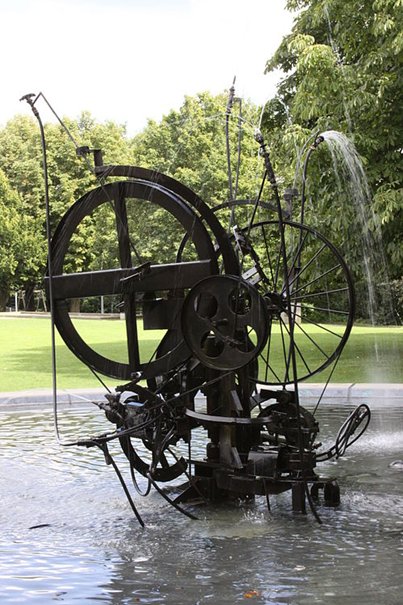
Also notable is the lifelong friendship between Dadaist artists Marcel Duchamp (1887-1968) and Man Ray (1890-1976) through their shared passion for chess. Duchamp, who even competed in chess Olympiads with the French national team (e.g., 1928, 1930, 1931, 1933), was inspired by chess as a form of art. Duchamp famously said: "Not every artist can play chess, but all chess players are artists." Man Ray, on the other hand, was the practical one, creating chess sets and pieces. This example shows how art and sport can overlap and merge.
Whether it's chess, ball games, boxing, wrestling, cycling, etc.—all of these sports, when practiced seriously and professionally, demand their tribute through discipline, creativity, endurance, constant perseverance, setting goals, practicing, and improving, especially during times of defeats, disappointments, and sacrifices. These qualities are also familiar to artists when they set individual goals for success and recognition through sincere creativity. Climbing the artistic and athletic Olympic peaks requires hard work and dedication.
Marcel Duchamp’s dual passion for art on the one hand and competitive chess on the other already raises another question: Are there professional athletes who were or are also successful artists, just as they were during their athletic careers?
Athletes as Artists
The question is already answered with figures like Dominik Schlumpf (1991), a professional EVZ ice hockey player and successful artist, as well as Olympic snowboarder and trained artist photographer Iouri Podladtchikov (*1988). However, a look into other sports careers reveals astonishing insights and leads to the so-called Olympic artists. The javelin thrower, multiple record-holder Roald Bradstock (*1962), even earned the nickname "The Olympic Picasso" in 2018.
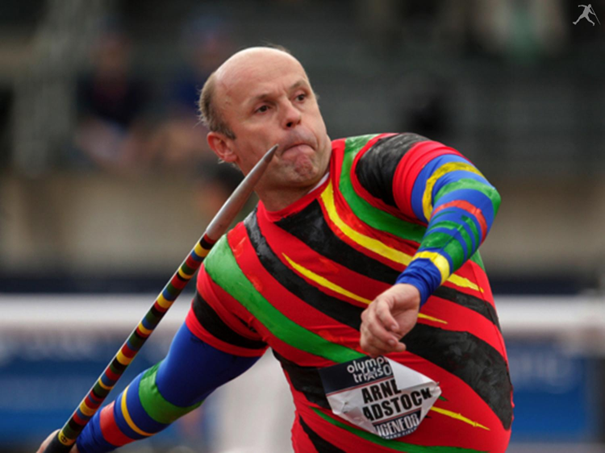
In 2000, he not only won the sport art competition with the painting Struggle for Perfection, but also became a founding member of Art of the Olympians (2006). The following year, he published numerous humorous videos on sports and art on YouTube under the name roald62. His participation in the 1st Olympic Art Project in 2018 in PyeongChang, South Korea, with 15 paintings, as one of four Olympic artists, made him internationally famous. When the World Olympians Association announced the creation of an art committee in September 2018, Bradstock was appointed chairman.
Since childhood, Lanny Barnes (*1982) has united two worlds: sports in biathlon and her preparations for the Olympic Games, and painting and drawing. In this field, animals and still lifes are the main focus, which she continues to cultivate and develop despite the demanding training. Her vision: to open her own gallery and expand her artistic career. This goal has already been achieved by Jean-Blaise Evéquoz (*1953), born in Sion, Switzerland: After winning a bronze medal in fencing at the 1976 Montreal Olympics, he deepened his passion for painting at the Académie des Beaux-Arts in Florence (1978-1983) and has been participating in national and international exhibitions ever since. After his first studio in Florence between 1982 and 1989, Evéquoz moved to Sion, where he has dedicated himself to emotional art, characterized by vibrant colors and simple motifs.
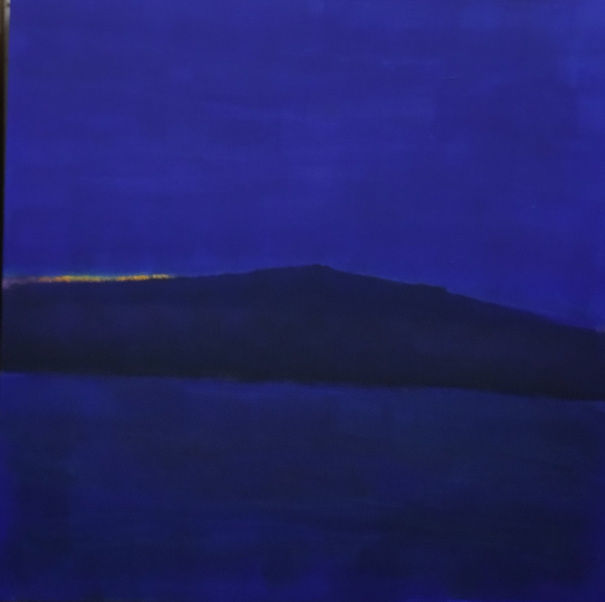
Alongside the impressive sports career of French handball player, triple European champion, world champion, and three-time Olympic gold medalist Luc Abalo (*1984), a deep passion for painting emerges, which he has intensified since studying at the LISAA School of Arts (Higher Institute of Applied Arts). For over 15 years, sports and football occupied 100% of Josephine Henning's (*1989) life, the former national football player and Olympic gold medalist in Rio 2016: “Art,” as Henning says on her website, “has always been there alongside everything else. Without it, I would have been very unbalanced.” But at the age of 28, her attitude changed, and she now fully focuses on art alongside her work as a member of the board of the DFB Cultural Foundation.
No Pain, No Gain?
This well-known proverb may be annoying, but it holds true in its essence for both the sports and art worlds, as shown by the following example: Former tennis player Eliska Klinkenberg was fixated on this discipline since the age of four. Due to a serious injury, she didn’t make it to the top of the world rankings. After changing her focus, qualities like concentration and training, which she had already developed, helped her in her second passion—art. She now approaches it with determination, intensity, and joy: “The best example of pursuing art without following the traditional route is myself. I am often asked where I studied or what artistic background I have. ... And that's what's fascinating about art. It’s everywhere, waiting for you, and you can find it anywhere and then reinterpret it” (quote from her website).
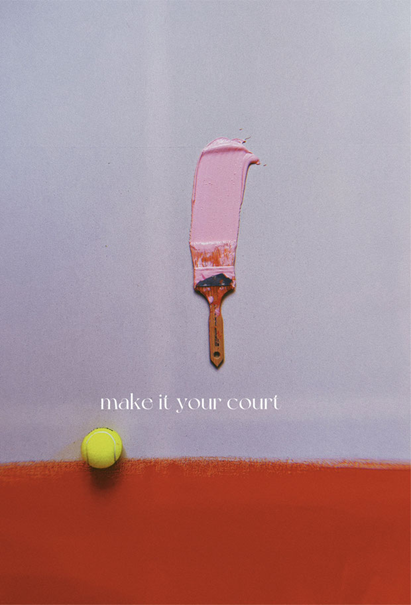
Visions
Whether self-taught or academically trained artists, they know the hurdles, the exhausting stretches of inquiries, marketing and sales strategies, the long breath, the perseverance, and the training sessions at the easel that are needed every day to earn recognition, be noticed, and celebrate successes and awards. Borrow from sports the qualities and ambitions required for these visions, and train the area that fulfills you.
My vision: May the thoughts from this blog encourage artists on their individual journeys and inspire them to become artistic athletes in their own way. And may they, through their creativity, curiosity, and experimental spirit, become role models for athletes!
Tips for Current Exhibitions on Art and Sport (Selection)
“She can kick it”. Frauenfussball und Fotografie im f³ – freiraum für fotografie in Berlin (bis 07.09.2025)
Sport und Freizeit in Werken der Sammlung Würth, Forum Würth Rorschach (bis 14.02.2027):
Deutsches Sport & Olympia Museum Köln
Further reading:
https://sport-geschichte.de/tiedemann/documents/VortragLorient2007Deutsch.pdf
https://www.kunstforum.de/artikel/kunst-und-sport/
https://www.lehmanns.ch/shop/kunst-musik-theater/5776105-9783631509395-kunst-und-sport
https://www.digitales-deutsches-frauenarchiv.de/themen/frauen-bewegung
https://frauenmuseum.de/produkt/frauen-bei-olympia-2008/
Manuel Neukirchner (Hrsg.): In Motion. Kunst und Fußball, Deutscher Kunstverlag, 2024: https://biderundtanner.ch/detail/ISBN-9783422801349/HerausgegebenNeukirchner-Manuel/In-Motion
Author: Martina Kral

